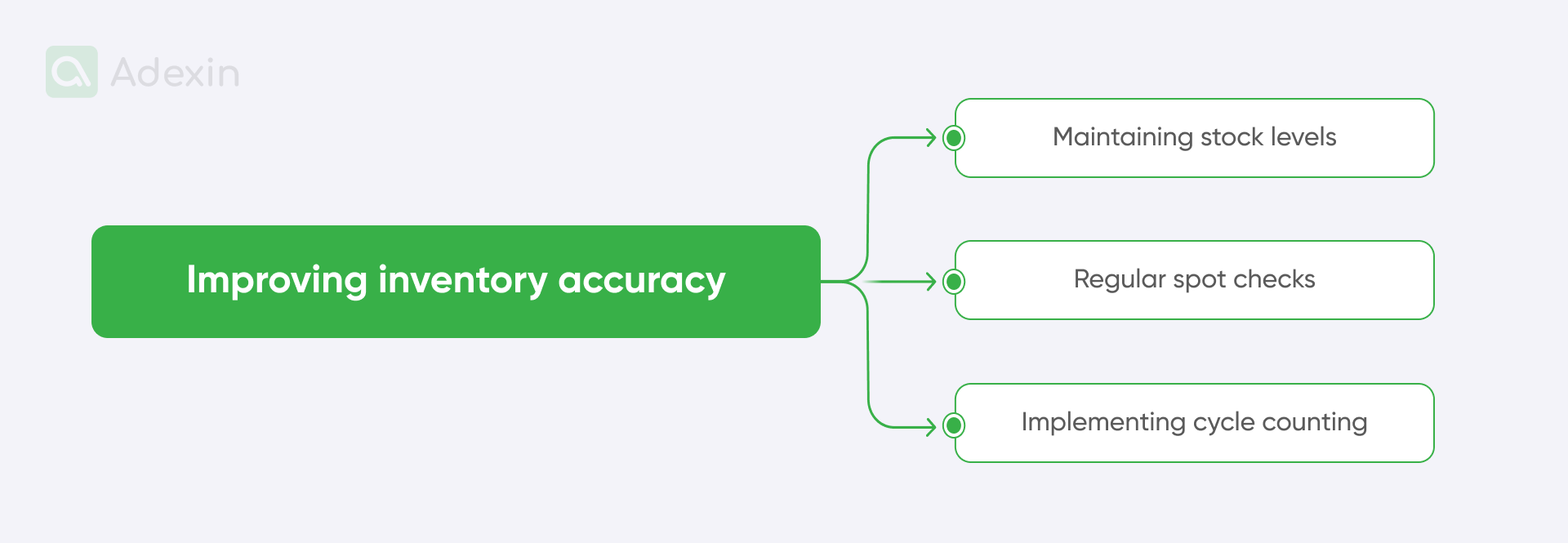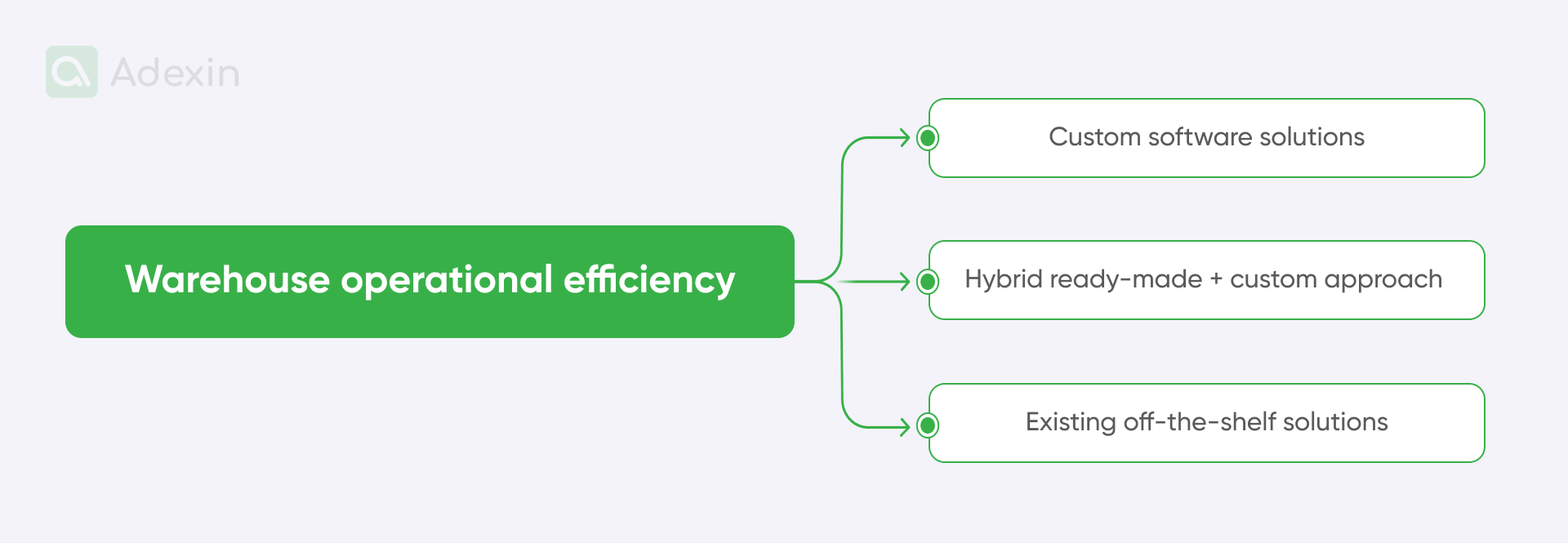Every square meter of warehouse space seems like a precious commodity for every warehouse. However, it does not always match the expectations of warehouse supervisors and managers. We often see accumulations of crowded aisles in warehouses and cluttered shelves where problematic items end up in black holes. Money that could be invested, innovated, or reinvested in the business, where items could be delivered to customer satisfaction instead of sitting on the shelves gathering dust as missing stock. Mathew, a warehouse supervisor at Venlo Hub in the Netherlands, knew this was not sustainable and was forced to look for solutions.
The issue with stock often began subtly. At the core of Mathew's dilemma lay the concept of inventory holding cost, which is defined simply as the expenses of keeping stock. The more inventory you held, the higher these costs soared. Based on Jönköping University research from 2024, we can easily put a stark number on it, where 10-40% of average inventory expenses were tied up in just holding the stock. It is a significant drain on costs. It makes effective inventory management crucial for the financial well-being of any manufacturing company.
This case involves production facilities with linked warehouses, but not e-commerce or fulfillment centers, facing different problems. However, they deal with similar challenges, and in this article, we'll provide a helpful guide on tackling major problems with stock imbalances.
Common inventory challenges in warehousing
Inventory management in warehousing is more than just counting products, it’s the backbone of operational efficiency and profitability. Yet many manufacturers consistently struggle with inventory-related problems that lead to either overstocked warehouses filled with excess raw materials or painful shortages that halt production. These issues stem from both external technology limitations and internal process breakdowns.
Disconnected systems disrupt data flow
A major external issue is fragmented systems. When warehouse management, transportation, and ERP platforms don’t communicate, data becomes inconsistent and outdated. This siloed approach prevents visibility across the supply chain and causes misalignment between inventory and actual demand.
Manual workflows slow everything down
Despite technological advances, many companies still rely on manual processes. Paper-based tracking, spreadsheets, and slow data entry introduce delays and inefficiencies. These outdated inventory flows not only waste time but also create opportunities for costly mistakes.
Human error compounds inventory issues
Relying on people for repetitive inventory tasks inevitably leads to mistakes like miskeyed entries, misplaced stock, or incorrect counts. These errors accumulate, resulting in fulfillment delays, production interruptions, and ultimately lost sales and revenue.
Lack of real-time visibility creates chaos
Internally, a lack of accurate, real-time inventory data forces managers into reactive decision-making. Overstocking locks up cash and increases storage costs, while stockouts disrupt production, increase customer complaints, and damage customer relationships. Without clear visibility, it’s nearly impossible to plan ahead effectively.
Daily demands hinder long-term strategy
The constant pressure to manage daily operations leaves little time for proactive inventory planning. Managing defective materials, correcting data errors, and firefighting operational issues prevent teams from focusing on demand forecasting, process improvement, or strategic growth.
Obsolete stock drains profit
Dead stock, items that can’t be sold due to cancellations, changes, or obsolescence, sits unused and ties up resources. Combined with poor returns management, these products become phantom inventory that skews system accuracy and adds hidden costs.
Supplier delays and pilferage distort counts
External supplier issues often lead to late or partial deliveries, contributing to shortages and delays. Internally, pilferage, through theft, misplacement, or mishandling, further distorts inventory accurate records and quietly erodes profitability.
Solving inventory challenges requires more than quick fixes. It takes system integration, automation, and a proactive mindset. When manufacturers gain real-time control and visibility, inventory stops being a liability and becomes a strategic advantage.
Need help with inventory management software for your business?
Learn how we can help you
Explore moreBest practices for improving inventory accuracy
This confluence of issues often leads to a profound question that echoes through the minds of logistics professionals. The question is born from the frustrating reality that despite technological advancements, many fundamental inventory challenges persist, hindering the boost efficiency and profitability. One such challenge is maintaining accurate inventory records, a task that demands more than just occasional audits. This is where cycle counting comes into play.
Cycle counting is an inventory management technique in which a small subset of inventory is counted on a continuous, rotating schedule rather than performing a complete physical inventory count all at once. Once goods are in the warehouse, ensuring their condition and accurate tracking is paramount until dispatched. This requires a proactive approach to inventory management.
When Mathew, the warehouse supervisor, delved deeper into the concept of cycle counting, he understood it not as a magical fix but as a discipline. It is a continuous approach with a technique where, instead of shutting down the entire operation for a massive stock-take once a year, personnel need to count a small subset of inventory continuously.
That approach uses a rotating schedule. It is about chipping away at the problem daily rather than facing a mountain once a year. But we need to provide ongoing training to the personnel to avoid messy warehouses and keep neat storage locations. It is crucial for warehouse employees they have access to barcode technology that allows scanning items and shelves, giving higher warehouse efficiency. This is a key to warehouse productivity that no matter if your business is using multiple sales channels that makes it difficult to track inventory. It is crucial to follow customer expectations by providing efficient warehouse operations. Best practices for improving inventory accuracy
Effective stock control is essential to ensure smooth operations, minimize losses, demand forecasting, and meet customer demand. Below are key methods for conduct regular audits to maintain optimal stock levels and accuracy:

Maintaining manageable stock levels for safety stock
Keep inventory at levels that allow for frequent rotation. This approach helps prevent the accumulation of unused stock and reduces the risk of inventory losses due to spoilage or expired goods. By maintaining a manageable safety stock, organizations can respond more flexibly to changes in demand while minimizing waste.
Conducting regular spot checks to cope with customer demand
It is important to perform monthly spot checks on 5% of the total stock or at least 10 stock cards, whichever is greater. The warehouse manager or designated team should lead these checks.
A formal spot check report must be prepared and shared with both the Finance team, which is responsible for stock balances, and the stock owner. Any discrepancies found during the check must be documented, investigated, and explained within one month or before the next scheduled check.
Once Finance and the program business partner accept the spot check results, the counted boxes or pallets may be sealed. This prevents the need for recounting those items during the next full stock take.
Implementing cycle counting
Cycle counting should be carried out according to a set schedule. The objective is to count a specific number of items each day to complete a full count of warehouse stock twice per month.
To determine the daily count requirement, multiply the total number of stock cards by two, then divide that number by the total workdays in the month. For example, with 30 stock cards and 20 workdays, the calculation would be (30 × 2) ÷ 20 = 3 stock cards to be counted each day.
This cycle counting routine should be integrated into daily or weekly work plans. During each count, staff must verify bin cards, stock cards, and supporting documents such as dispatch waybills and Goods Received Notes. All findings should be cross-checked against the most recent global stock report to ensure consistency and accuracy.
Transforming warehouse stock with precision-focused IT solutions
We bring you and Mathew a deep understanding of logistics and supply chain dynamics. Adexin recognizes the unique challenges faced by manufacturing and warehouses, like those in companies from Venlo Hub.
Our approach is to overcome challenges and to fit into existing business workflows rather than forcing disruptive change. We believe in delivering working, tailored digital solutions that enhance, not hinder. We understand how hard it is to implement IT in live logistics processes. That's why we don't push systems, we create them with you.
Consider a recent example regarding managing a warehouse, where the Adexin team has developed a lightweight WMS solution. The system we built specifically optimized the inventory handling of components in the warehouses of a manufacturing company in the MENA region.
This wasn't an off-the-shelf solution but a powerful system developed to optimize inventory. We brought a custom solution for smooth scaling and built it for seamless integration into their unique manufacturing environment. This tailored approach ensured the system addressed their precise needs, preventing the very "black hole" issues Mathew faced.
Need help with warehouse management system development?
Learn how we can boost your logistics processes
Explore moreThe hidden costs of Excel-based stock management
It's 2025, and while many companies have adopted advanced software systems, a surprising number still rely on Excel for warehouse stock management. Mathew's frustration with Excel reflects a broader, well-known issue. After years in the industry, he sees firsthand how warehouse supervisors like himself may be proficient in Excel, but the warehouse staff often struggle to keep up.
For Mathew, moving away from Excel was more than just an inventory management software switch. It meant tearing through the layers of inefficiency and hidden costs that had taken root at the Venlo Hub. Despite the availability of better tools, multiple warehouses still cling to Excel due to a combination of psychological, financial, and operational factors.
Initial cost and the illusion of a free solution
One of the key reasons Excel remains prevalent is its perceived affordability. Most businesses already have Microsoft Office installed, so there’s no visible extra cost associated with using Excel. This makes it a seemingly logical and cost-effective starting point for small businesses and startups.
In addition, Excel’s widespread use in schools and offices means that most employees already have at least a basic level of comfort with it. This reduces the urgency to invest in training or new tools. The common mindset of "if it’s not broken, don’t fix it" also contributes to this inertia. Many businesses hesitate to explore alternatives because researching, selecting, and implementing a new system feels overwhelming and risky.
The pitfalls of manual processes and outdated data
Excel’s biggest weakness lies in its static nature. Spreadsheets only show a snapshot of inventory levels at the time of the last update. In a fast-moving warehouse, where goods are constantly received, moved, and shipped, this leads to data that is almost instantly outdated.
Relying on manual data entry for every transaction introduces the risk of human error. Mistakes such as typos, missed entries, or incorrect quantities can quickly create discrepancies that affect the entire inventory management. Even a single oversight can cascade into significant operational issues.
The challenge of version control
When multiple team members update the same spreadsheet, version control becomes a serious problem. Without a central, real-time retrieval system, it's difficult to know whose data is the most accurate or up-to-date. Accidental overwrites or missed updates can lead to confusion, duplication of effort, or even loss of critical information.
The continued reliance on Excel in warehouse environments is rarely about ignorance of better solutions. Instead, it’s often a combination of cost concerns, perceived simplicity, and resistance to change. However, as warehouses grow more complex and the demand for real-time accuracy increases, the limitations of Excel become increasingly hard to ignore.

Three ways to boost warehouse operational efficiency
Every business, warehouse, and supply chain has its own unique requirements. That’s why there are multiple optimization paths available to suit various operational realities. These paths provide logistics companies and warehouses with the flexibility to choose what best fits their current setup, goals, and challenges.
Here are three common solution paths used in the industry:

1. Fully custom software solutions by Adexin
At Adexin, we specialize in developing fully customized software tailored specifically to your logistics operations. These solutions may include web and mobile applications, built to integrate seamlessly with your existing systems, such as carrier platforms, CRMs, or ERP systems like SAP. We also provide ongoing support to ensure lasting value. This route delivers maximum flexibility, scalability, and a strong competitive edge, though it typically involves a longer development timeline and higher initial investment.
2. Hybrid ready-made + custom approach
This path combines the strengths of off-the-shelf software with selectively developed custom components. For example, a company might use a standard WMS system but enhance it with a custom routing engine or a tailored component tracking dashboard. This hybrid approach balances cost and implementation speed while still allowing for some degree of personalization. However, it may introduce integration complexity and the need to coordinate with multiple vendors.
3. Existing off-the-shelf solutions
This approach involves integrating pre-built management software solutions such as warehouse management systems (WMS), transportation management systems (TMS), inventory management systems for multi-warehouse operations, and business intelligence (BI) tools. These are often plug-and-play tools offering quick deployment and a lower upfront cost. While they offer fast time-to-value, they may lack the flexibility to address specific operational nuances, sometimes including unnecessary features or missing critical ones.
Why can't transformation wait? Well, it is worth adding a few words on what happens if you delay. Delaying this transformation carries significant risks:
Continuing with Excel leads to persistent delays, penalties, and inaccurate data.
Uncoordinated processes result in wasted logistics spending, potentially 2-3 times more than necessary.
Implementing wrong-fit software creates another patchwork mess, failing to solve core problems.
These challenges compound over time, making operations increasingly inefficient and misaligned with customer expectations.
On the other hand, embracing digital transformation, whether through a fully custom, hybrid, or off-the-shelf approach, empowers your business to:
Eliminate manual inefficiencies and reduce costly errors
Optimize workflows across warehousing, transportation, and inventory
Improve decision-making through real-time visibility and reliable data
Strengthen scalability and competitiveness in a fast-changing market
No matter which path you choose, the key is to act decisively. Modernizing your warehouse operations is not just an IT upgrade, it’s a strategic move that determines how well your business will perform tomorrow.
Are you in search of a reliable tech partner?
Adexin can help with advanced logistics solutions
Contact usFinal takeaway
The pervasive challenges faced by warehouse management supervisors like Mathew at Venlo Hub, from cluttered warehouse spaces and mounting inventory holding costs to the frustrations of manual processes and disconnected systems, underscore a critical need for inventory shrinkage and modern solutions. Relying on outdated methods like Excel perpetuates inefficiencies, leading to constant errors, a lack of real-time visibility, and significant financial drains.
Let's discuss your logistics automated processes, and we'll draft a technical approach and timeline. See our case studies to see where we've helped companies like yours.

